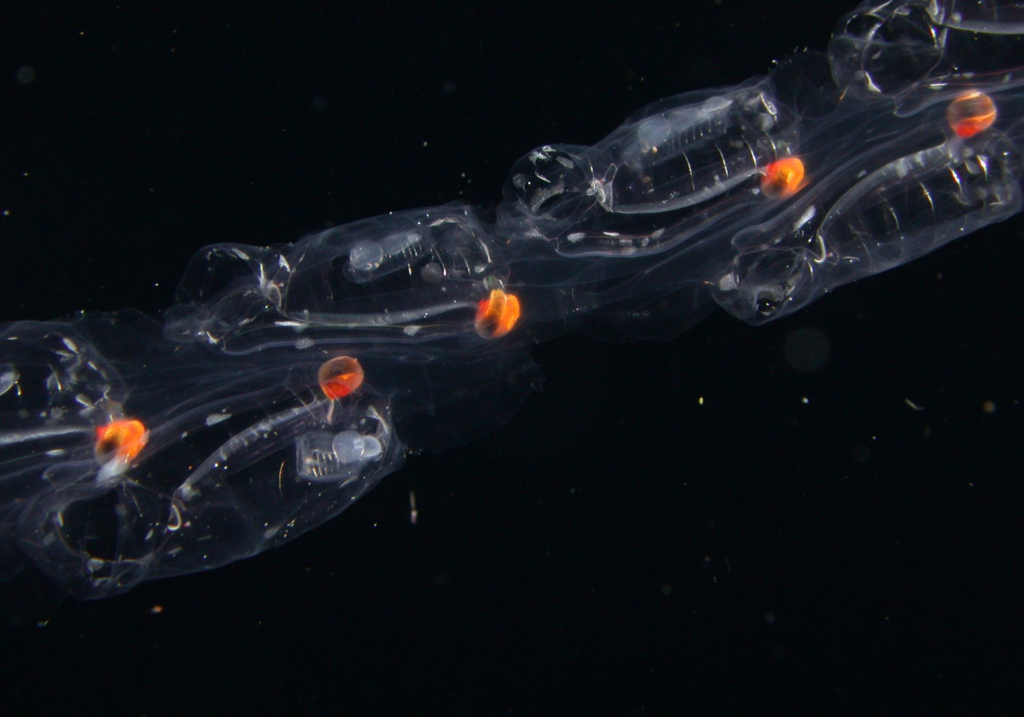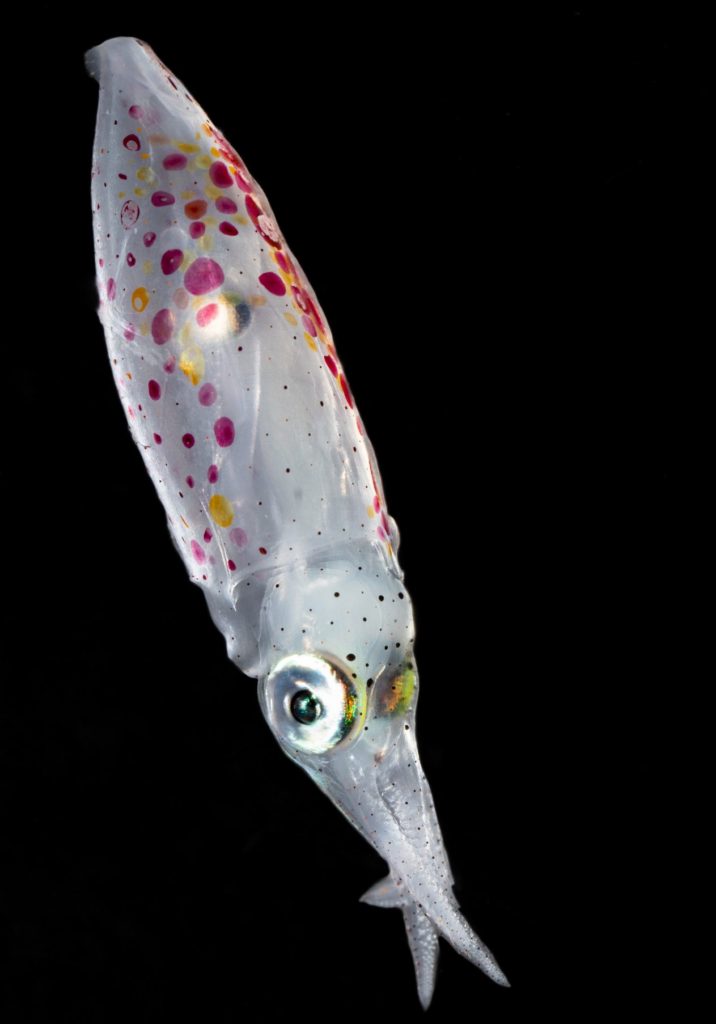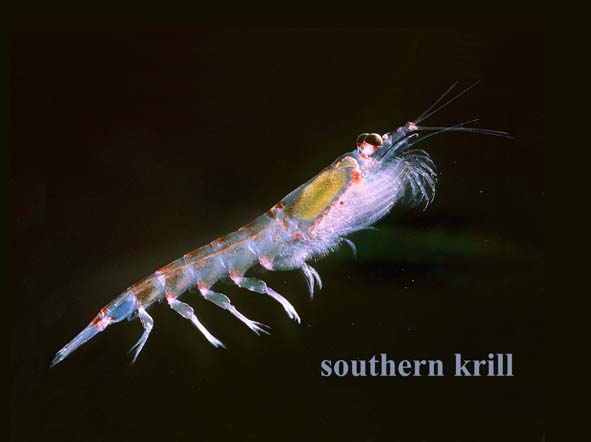Bad news for whales and oceanic carbon capture
Warming oceans are bad news for twilight zone organisms carrying captured carbon into the abyss when they die (and whales eat).
An observation


Maddie Molloy – 03/05/2023, BBC News Climate and Society
Climate change: life in ocean ‘twilight zone’ at risk from warming
Climate change could dramatically reduce life in the deepest parts of our oceans that are reached by sunlight, scientists warn.
Global warming could curtail life in the so-called twilight zone by as much as 40% by the end of the century, according to new research.
The twilight zone lies between 200m (656ft) and 1,000m (3,281ft).
It teems with life but was home to fewer organisms during warmer periods of Earth’s history, researchers found.
…
Read the complete article….
How warming works in the twilight zone



Ocean Twilight Zone – Woods Hole Oceanographic Institution, 04/05/2023
Why is it so important to understand life in the ocean twilight zone?
How much life is in the ocean twilight zone?
The twilight zone is home to more fish than the rest of the ocean combined. Most of these fish—and other organisms that live in the zone—are tiny, measuring just a few inches long or less. But some, like gelatinous siphonophores, can form chains that extend as much as 130 feet, making them among the biggest animals on Earth. Even the smallest twilight zone inhabitants can be powerful through sheer number, however. A tiny but fierce-looking fish called a bristlemouth is the most abundant vertebrate on the planet—for every one human, there are more than 100,000 bristlemouths.
…
How does life in the twilight zone affect global climate?
By migrating to and from the surface, eating, being eaten, dying—and even by pooping—organisms in the twilight zone transport huge amounts of carbon from surface waters into the deep ocean. That process, called the biological pump, plays an important role in regulating Earth’s climate.
…
Read the complete article….
The science behind the observations

Katherin A. Chriton, et al. – 27/04/2023, Nature Communications
What the geological past can tell us about the future of the ocean’s twilight zone
Abstract: Paleontological reconstructions of plankton community structure during warm periods of the Cenozoic (last 66 million years) reveal that deep-dwelling ‘twilight zone’ (200–1000 m) plankton were less abundant and diverse, and lived much closer to the surface, than in colder, more recent climates. We suggest that this is a consequence of temperature’s role in controlling the rate that sinking organic matter is broken down and metabolized by bacteria, a process that occurs faster at warmer temperatures. In a warmer ocean, a smaller fraction of organic matter reaches the ocean interior, affecting food supply and dissolved oxygen availability at depth. Using an Earth system model that has been evaluated against paleo observations, we illustrate how anthropogenic warming may impact future carbon cycling and twilight zone ecology. Our findings suggest that significant changes are already underway, and without strong emissions mitigation, widespread ecological disruption in the twilight zone is likely by 2100, with effects spanning millennia thereafter. [my emphasis]
Read the complete article….
Why is all this important to know?
Ocean fertilization to stimulate algal growth over the surface of the abyssal ocean offers a means to capture CO₂. A food chain of pelagic consumers ranging from the twilight creatures harvesting the algae and their larger predators up to whales can then capture and package the carbon capturing algae into a range of parcels from fecal pellets to dead whales that will drop to the ocean floor.
The nature of biological systems is that they are self-reproducing and can grow exponentially under suitable conditions. ‘farming’ these consumers to optimize the carbon capture and transport it to the bottom is something that might realistically have the capacity to actually reduce atmospheric CO₂ on a fast enough timescale to slow, stop and reverse global warming.
However, the articles above show that a warming ocean substantially reduces the viability of the twilight organisms that provide the packaging service. Thus, if we don’t implement this biological sink before significantly more warming occurs, this opportunity to reverse the warming process may be lost.
Featured image: Antarctic krill Euphausia superba (copyright Uwe Kils, Institute of Marine and Coastal Sciences, RUTGERS University). Along with bristlemouth fish, krill are major components in the food chain of the twilight zone’s biological carbon pump potentially sequestering carbon in the abyssal depths of the world’s oceans. The world oceans’ surfaces, away from the shallows, are comparatively sterile because the water lacks micro nutrients (e.g., iron, manganese) required to support phytoplankton. Thus, vast areas of the oceans lack effective biological pumps to sequester carbon. Fertilizing these sterile areas of the oceans with trace nutrients and farming the twilight zone (i.e., seeding with appropriate species to provide the biological pumping mechanism) may establish a sufficiently extensive mechanism to sequester globally significant amounts of carbon in the abyssal depths.
.
